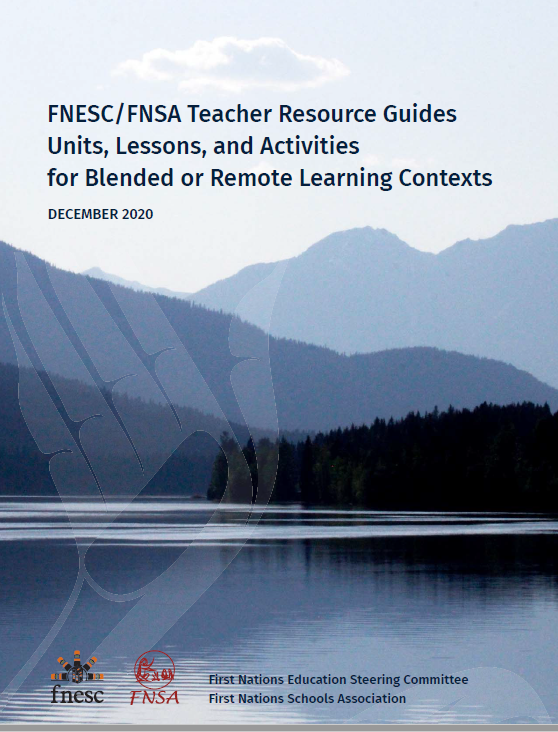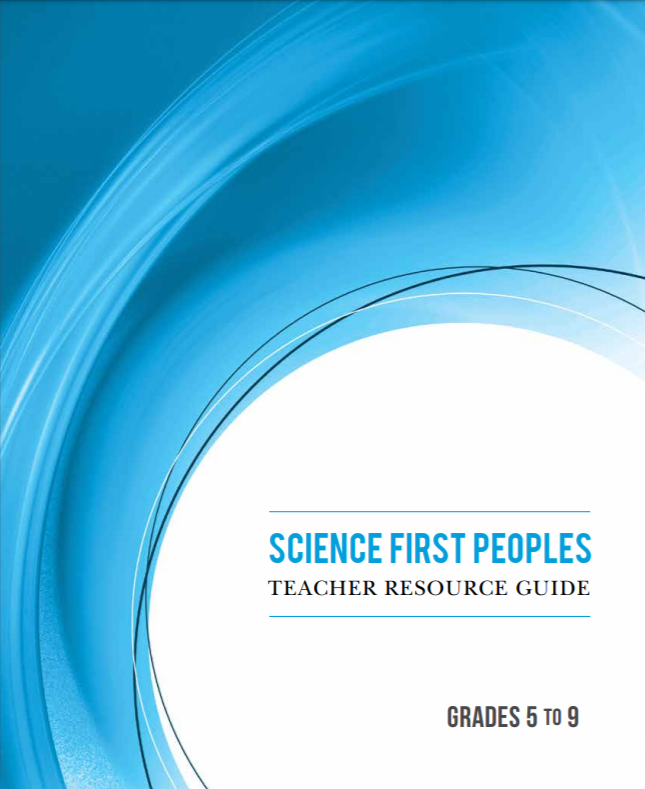The FNESC/FNSA Science First Peoples (5-9) Teacher Resource Guide provides educators with resources to support the integration of the rich body of First Peoples (unappropriated) knowledge and perspectives into Science, and other curricular areas.
The guide includes background information on how First Peoples’ perspectives in science can be recognized and included in science inquiry. It also offers curriculum planning suggestions, and provides examples of fully developed multi-grade thematic units that correspond with the BC curriculum.
While is focuses on grades 5 to 9, it can also be applied to other grade levels and be used in conjunction with the Science First Peoples Teacher Resource Guide (SECONDARY) (2019).
It is recognized that the wealth of First Peoples’ science knowledge is held by communities. The guide can be used in conjunction with locally based resources that are developed by or in collaboration with, local communities.
For a hardcopy of this resource, please use our publications form to order. Quantities are limited.
We welcome your feedback on our resources.
Adaptation Ideas
See FNESC/FNSA Teacher Resource Guides, Units, Lessons, and Activities for Blended or Remote Learning Contexts (Dec. 2020) for adaptation ideas relating to this publication. This guide is designed to identify the units, lessons and/or activities within FNESC/FNSA teacher resource guides that can be most readily adapted for remote or blended learning situations.

Resources
Blackline Masters
Traditional Ecological Knowledge
1-1 What is Traditional Ecological Knowledge?
1-2 Clam Gardens
1-3 Plant Resource Management
1-4 Reading Nature’s Signals
1-5 Research Using the 7Es
1-6 Traditional Ecological Knowledge Research
Plants and the Connection to Place
2-1 The Bitterroot Story
2-2 Traditional Knowledge About Plants
2-3 Wild Tea Fact Sheet
2-4 Blending Teas Workbook
2-5 Tea Testing Lab Report
2-6 Blending Teas Journal Reflection
Power from the Land
3-1 Parts of a Paddle
3-2 Paddle Blade Styles
3-3 South Coast Style Canoe
3-4 North Coast Style Canoe
3-5 Birchbark Canoe
3-6 Kootenai Canoe
3-7 Traditional Tools
3-8 Scientific Inquiry Using the 7Es
Bears and Body Systems
4-1 Inside a Bear
4-2 Inside a Human
4-3 Comparing Bear and Human Anatomy
4-4 How Does Your Heart Rat Compare with a Bear?
Climate Change
5-1 Climate Change in the News
5-2 Evidence of Climate Change Over Time from First Peoples’ Oral Histories
5-3 Salmon in Hay River?
Interconnectedness of the Spheres
7 Creating a Learning Plan, Plan of Action, Learning Issues Reflection etc.
Ocean Connections
8-1 Ocean Connections
8-2 Marine Resources Used by Coastal First Peoples
Shared Knowledge Science Celebration
8-1b Shared Science Engage and Explore
8-2b Evaluate and Explain
8-3 Evaluate and Reflect
8-4 Evaluate and Reflect Self Assessment
8-5 Survey
8-6 Daily Knowledge Check
8-7 Shared Knowledge Science Celebration Bingo
Encouraging First Nations Learners’ Engagement in Science

